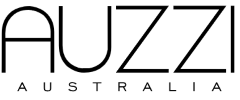The Steps Necessary to Better Prepare for A Facelift
- Written by News Company

Regardless of whether you’ve had any face-related surgery before, getting a facelift is a big decision, and one that should not be considered lightly. If you have taken the time to really think about it and choose to go ahead with the procedure, there are a few useful things to keep in mind after an initial consultation with a plastic surgeon. In addition to considering the procedure itself, choosing the right specialist can be just as important – their expertise should come into play when discussion around realistic expectations are discussed – the last thing you want is a plastic surgeon who promises it all. This is just the tip of the iceberg, though – read on to learn some more great tips to help you better prepare for a facelift.
What a facelift is all about
A facelift is technically referred to as “rhytidectomy” and is designed to smooth loose skin and wrinkles on the face and neck, in addition to tightening drooping tissues and rectifying any instances of fatty tissue. More often than not, these issues are related to age, so it’s more common to have patients who are older seek out a cosmetic surgeon in Sydney, Melbourne, or wherever else they may be located. The obvious benefit, then, is that a facelift can make someone feel more youthful due to an impressive increase in firmness. Once you’ve decided to go ahead, your surgeon will then give you a comprehensive list of pre and post-surgical instructions. These will detail several demands required of you to ensure the best result possible in relation to your face lift. As an example, one of the first things that is requested of patients is to stop smoking for two weeks (at the very least) before the operation, as this will slow the healing process – this is due to smoking negatively affecting blood flow in the patient which is, of course, tied to healing.
The day of your facelift and post-op care
On the day of your surgery, it will be important that you shower thoroughly, taking particular care to properly clean your hair. Afterwards, no hair products are to be used in your hair. Dress in comfortable clothes that don’t have too many loose ends (as they may pull at your wounds). The surgery itself takes between 3 and 6 hours, with the final time taken being completely dependent on a patient’s specific set of circumstances. Afterwards a patient should expect to stay in hospital for one or two nights. Although there will be a few things to remember after the operation, a specific set of instructions related to post-op care will be provided for you. It’s not abnormal to experience some post-operative swelling, bruising and numbness, and there is potential for this facial damage to heal for a few weeks or months. Not to matter, though – after this all cleared up, you’ll be looking better than ever!
Looking towards the future
At the end of the day, it’s important to remember that undergoing face lift surgery is a big decision that should not be taken lightly. If you do decide to get cosmetic surgery, remember to do your homework and find a surgeon with a significant amount of experience, -- and to particularly avoid those that promise you the world. It’s always a good idea to create a list of questions before your first consultation to ensure that you have an excellent understanding of the procedure by the time you leave the surgeon’s office.

